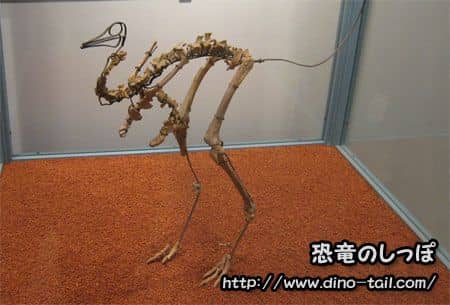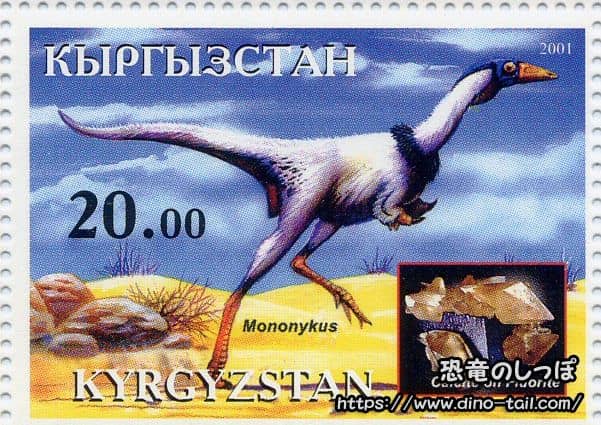About Mononykus
| Scientific Name (Genus) | Mononykus |
| Meaning of Name |
One claw
monos (one) [Greek] - onyx (claw) [Greek] |
| Classification | Saurischia, Theropoda ( Alvarezsauridae ) |
| Total Length | Approx. 1m |
| Diet | Carnivorous (insects, small mammals, etc.) |
| Period | Late Cretaceous |
| Species | Mononykus olecranus |
| Year of Paper Publication | 1993 |
| Genus Name Publication |
Flightless bird from the Cretaceous of Mongolia.
Nature volume 363, page 188 (13 May 1993). by Perle Altangerel, Mark A. Norell, Luis M. Chiappe & James M. Clark. 1993. |
Features
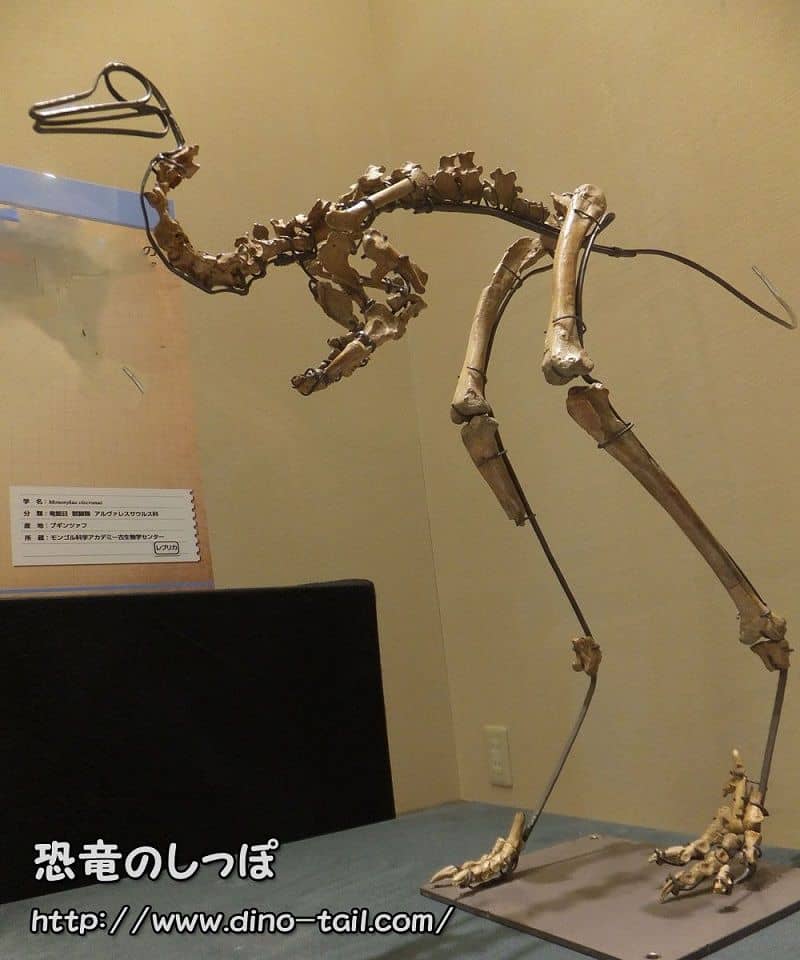
In 1993, a strange fossil with a large (about 7.5 cm long) single claw on its forelimb was discovered in Mongolia.
The forelimb of this dinosaur, named Mononykus, was thick, and its ulna had a long projection called the olecranon process.
The defining feature of Mononykus is its well-developed single digit. Its sternum had a keel, a feature where the flight muscles attach in birds, which was well-developed. This suggests that it was a dinosaur with 'large fingers and strong arms.'
Also, the structure of its hind legs suggests that it could run fast.
The most likely use for the single large claw is that it was used to destroy termite mounds and decaying wood to feed on the insects (such as termites) inside . It is thought to have been highly adapted to a specialized diet, much like the modern southern tamandua.
This theory is strongly supported by the amazing hearing ability revealed by the fossils of its close relative, Shuvuuia. Analysis of the inner ear structure showed that they had extremely good hearing, comparable to that of modern owls . Relying on their large eyes for vision and this sharp hearing, they likely pinpointed the location of their prey, such as insects and small animals, in the dark of night.
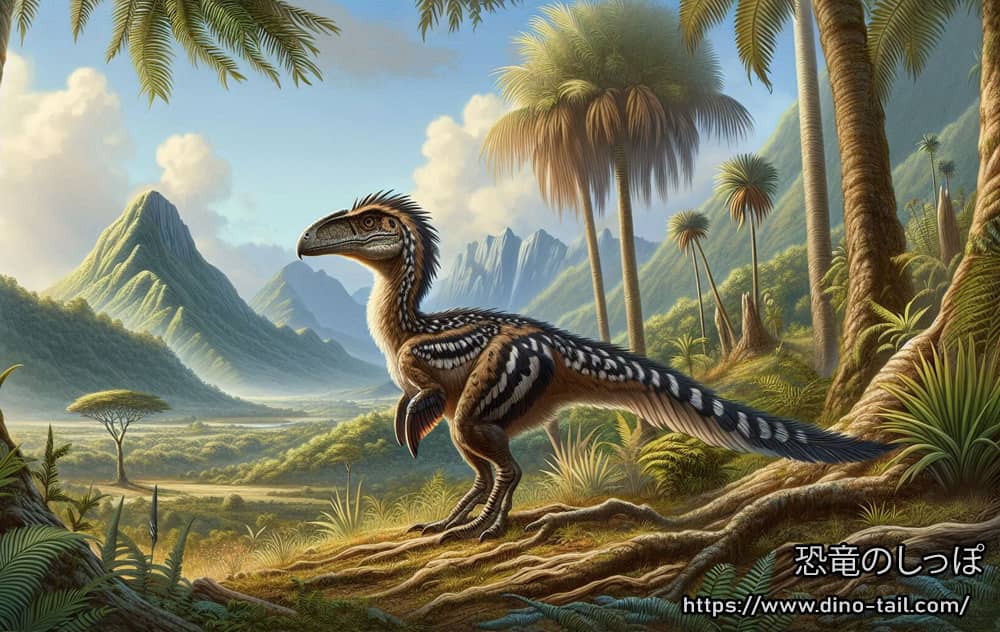
Powered by DALL-E3, 2024.
Mononykus is sometimes depicted as a feathered dinosaur.
Fossil impressions of feathers have been found in its close relatives, and it is known that the Alvarezsauridae family, to which Mononykus belongs, was a feathered lineage.
In close relatives of Mononykus, dinosaurs with two small, vestigial claws next to the one large claw have been discovered.
It is possible that Mononykus also had small, vestigial claws in addition to its large claw, which have not been found as fossils.
Bird or Dinosaur?: The Great Debate and Convergent Evolution
When Mononykus was discovered in 1993, its skeleton sent shockwaves through the scientific community. In particular, because it had a 'keel' on its sternum where the flight muscles of birds attach, it was announced as a 'flightless bird' in the description paper, sparking a major controversy.
However, subsequent research revealed that more primitive members of the Alvarezsauridae family had features different from those of birds, and it is now concluded that Mononykus was not a bird, but rather a 'dinosaur that independently acquired bird-like features in a completely separate lineage from birds.'
When organisms from different lineages evolve similar forms as a result of adapting to similar environments or ecological niches, it is called ' convergent evolution .' Mononykus is a very important example for learning about the diversity of dinosaur evolution and the phenomenon of convergent evolution.
The Name Mononykus
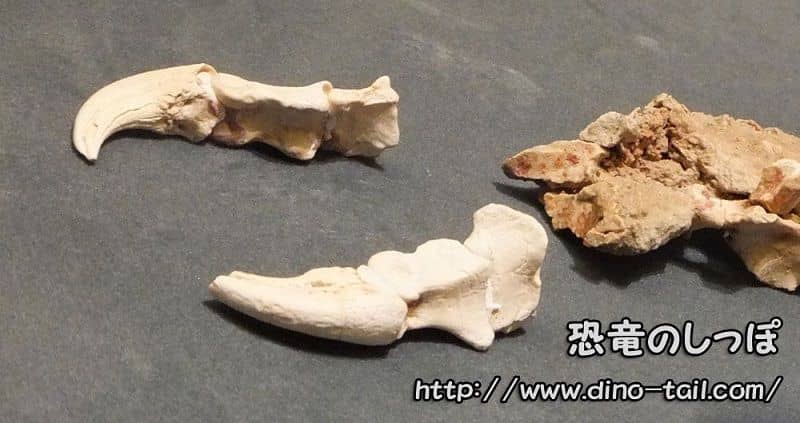
The scientific name of Mononykus is Mononykus. It means 'one claw.'
There are other dinosaurs with 'onyx' in their names, meaning claw.
- Baryonyx = heavy claw
- Deinonychus = terrible claw
- Scipionyx = Scipio's (a geologist's name) claw
Mononykus was originally given the scientific name 'Mononychus.'
However, it was discovered that this name was already in use for a beetle, so it was renamed 'Mononykus.'
Mononykus Stamp & Fossil Gallery
